Art & Exhibitions
The Art World Ignored Faith Ringgold for Decades. Her Admirers Think Her Work Is More Powerful Today Because of It
The artist's New Museum retrospective offers a study in how major artists can go long overlooked.
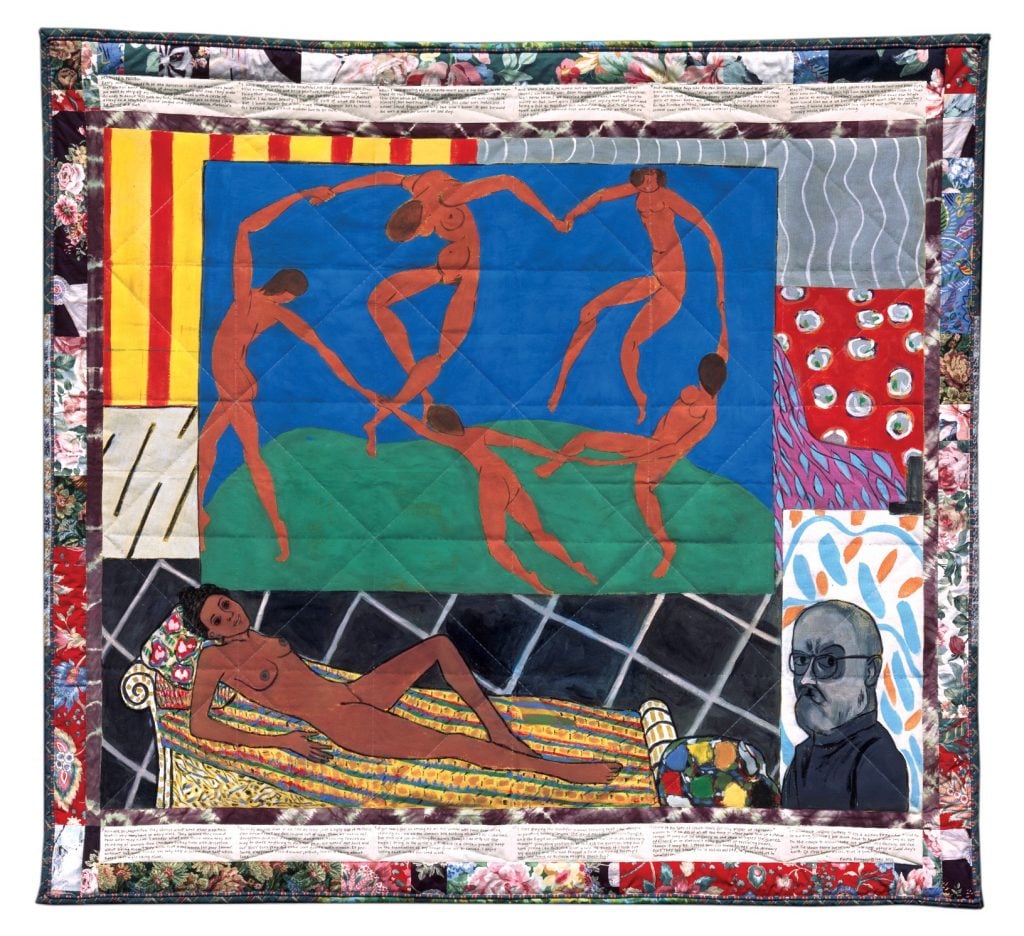
The artist's New Museum retrospective offers a study in how major artists can go long overlooked.

Melissa Smith

The art world has as much to do with access as it does with art. So a big part of the artist Faith Ringgold’s retrospective at the New Museum in New York, a sweeping survey spanning almost six decades, is organized around the fact that she didn’t have a lot of inroads. Looking back, her practice even flourished in spite of it.
This is because Ringgold never lost sight of who she was making work for. Her pieces are “very much coming from a Black womanist perspective, as opposed to a reactionary viewpoint,” artist Tschabalala Self, who first saw Ringgold’s work as a child in Harlem, told Artnet News. “Her works strongly exist within this aesthetic of Black American storytelling, and for the edification of that community, not from a didactic place of making work or explaining Black life to a non-Black audience.”
Ringgold’s retrospective is the first major New York museum show of her work since 1998, when the New Museum also presented her work. Another show was held at the studio museum in 1984.
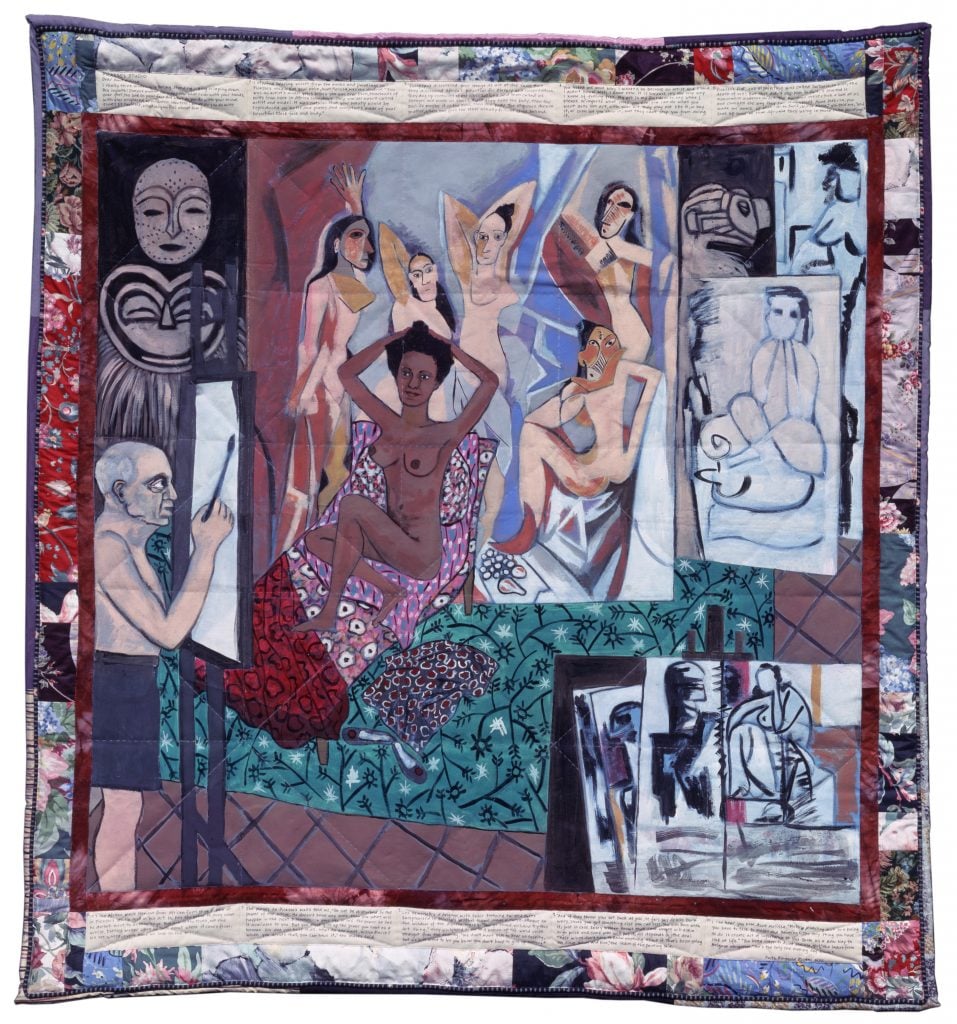
Faith Ringgold, Picasso’s Studio: The French Collection Part I, #7 (1991). © Faith Ringgold / ARS, NY and DACS, London, courtesy ACA Galleries, New York 2022.
“The gaps between the first two retrospectives immediately gives you a sense of the reception and of the marginalization of her work,” Massimiliano Gioni, the current show’s co-curator, told Artnet News. But her art “always found new ways to exist in spite of the many complicated conditions she was in.”
In the end, those complicated conditions are hard for anyone to ignore—even curators putting together a show about Ringgold’s life and work. In the years since her 1998 retrospective, Ringgold, now 91, was so alienated from the mainstream art world that she was forced to develop a practice that could exist and thrive outside it.
In her 1995 memoir, We Flew Over the Bridge, Ringgold reveals how, in the ‘70s, her career “started with a bang and ended with a whimper.”
After launching her “American People” series in the ‘60s—hyper-realist paintings that zeroed in on the racial and gender strife characterizing Ringgold’s everyday life at a time when the art world was obsessed with work that was “cool, unemotional, uninvolved, and not ‘about’ anything,” as she wrote—she joined the stable at Spectrum Gallery on 57th Street, becoming the only Black artist represented there.
During her tenure, she pivoted to her “Black Light” series, a group of pieces that included agitprop-style texts and African-inspired portraits with even more overt Black Power messaging, to the point where she eliminated the use of white paint altogether. By 1970, she’d landed her second solo show at the gallery, still eager to see what the art world could ultimately do for her.
By the end of the decade, she found her answer: not much.
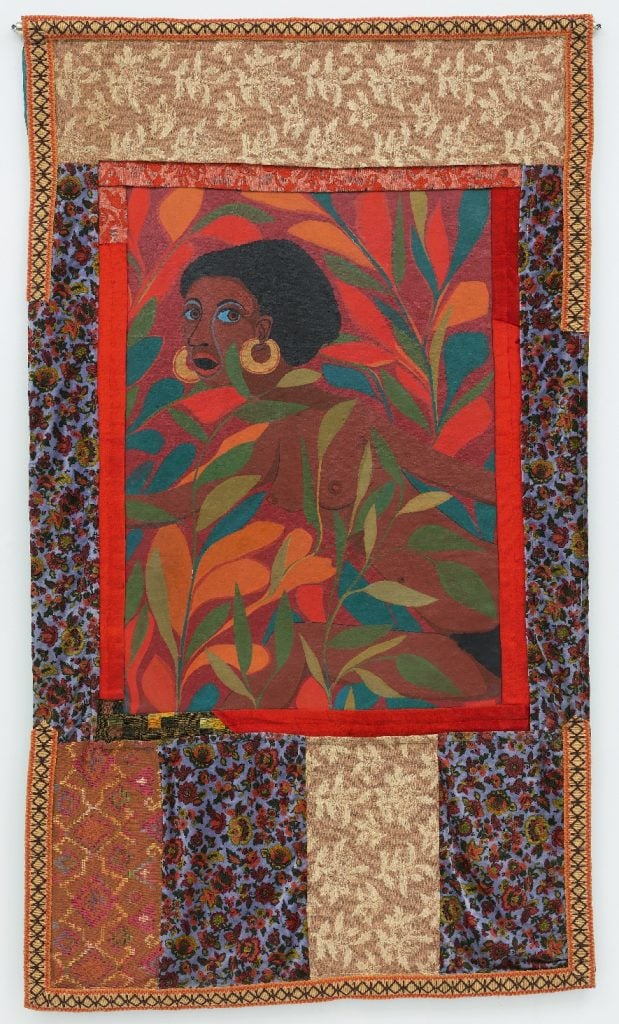
Faith Ringgold, Slave Rape #2: Run You Might Get Away (1972). © Faith Ringgold / ARS, NY and DACS, London, courtesy ACA Galleries, New York 2022. Photo: Tom Powel Imaging; courtesy Pippy Houldsworth Gallery, London.
Feeling disheartened, Ringgold forged ahead, finding new opportunities. But even now, as the art world turns its eyes onto her work, many audiences still don’t know that she’s much more than a painter. For one, she was also a prolific sculptor.
On top of her teaching career, she conducted lectures and put on performances at colleges and universities, producing doll-like soft sculptures as props. These life-sized, often heavily adorned works also provided Ringgold with a way of capturing a small piece of the world that she was able to call her own.
“She created a whole system of support for herself that was not the traditional gallery [system] in New York,” Gioni said.
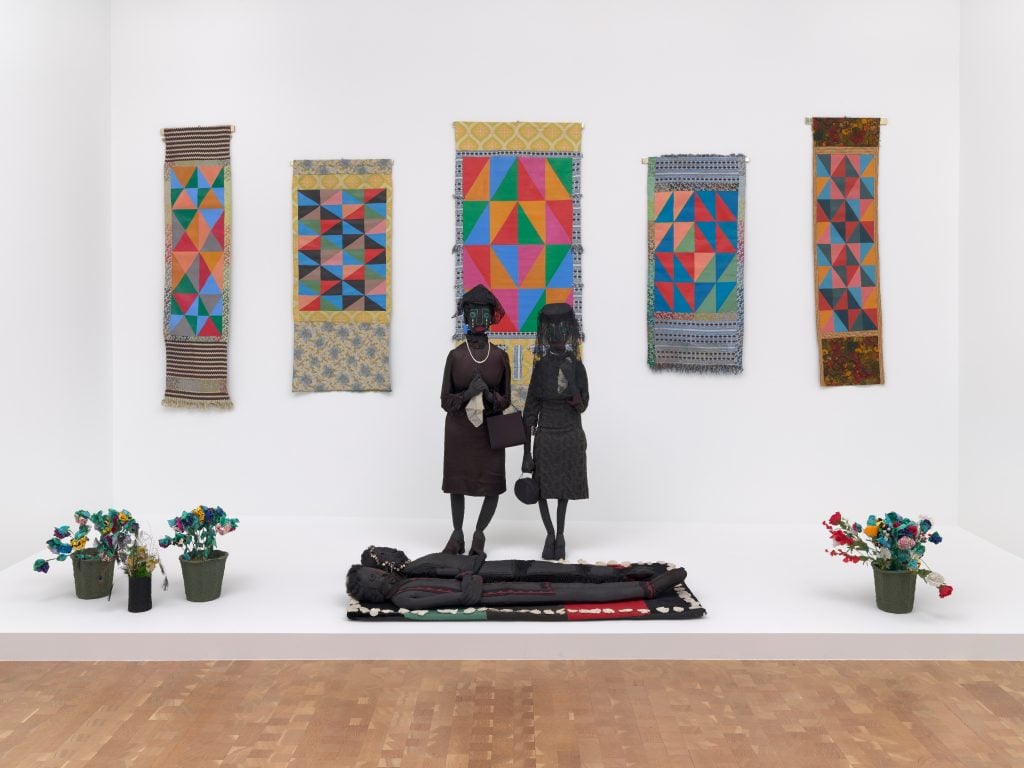
Faith Ringgold, The Wake and Resurrection of the Bicentennial Negro (1975-89). © Faith Ringgold / ARS, NY and DACS, London, courtesy ACA Galleries, New York 2022. Photo: Ron Amstutz; courtesy Glenstone Museum, Potomac, Maryland.
Growing up in Harlem in the 90s, Tschabalala Self knew about Ringgold, the children’s book author, but not about Ringgold, the artist.
“Peripherally, I would see a lot of her work in the community—for example, if you go to a children’s bookstore,” Self said. “So with Tar Beach, I just automatically identified it with the landscape because it looked like my neighborhood.” (Tar Beach was the first book Ringgold wrote and illustrated. The children’s story tells the tale of a young girl yearning to explore the world beyond Harlem.)
Self, who has been so inspired by Ringgold’s life and art that she worked closely with Gioni to fundraise for the show, explained that Ringgold’s work, along with that of a number of other prominent Black artists, was woven into the tapestry of her neighborhood. The way it worked—and even still works—is that someone can have a strong, even critical presence in one community, while simultaneously being shunned by another.
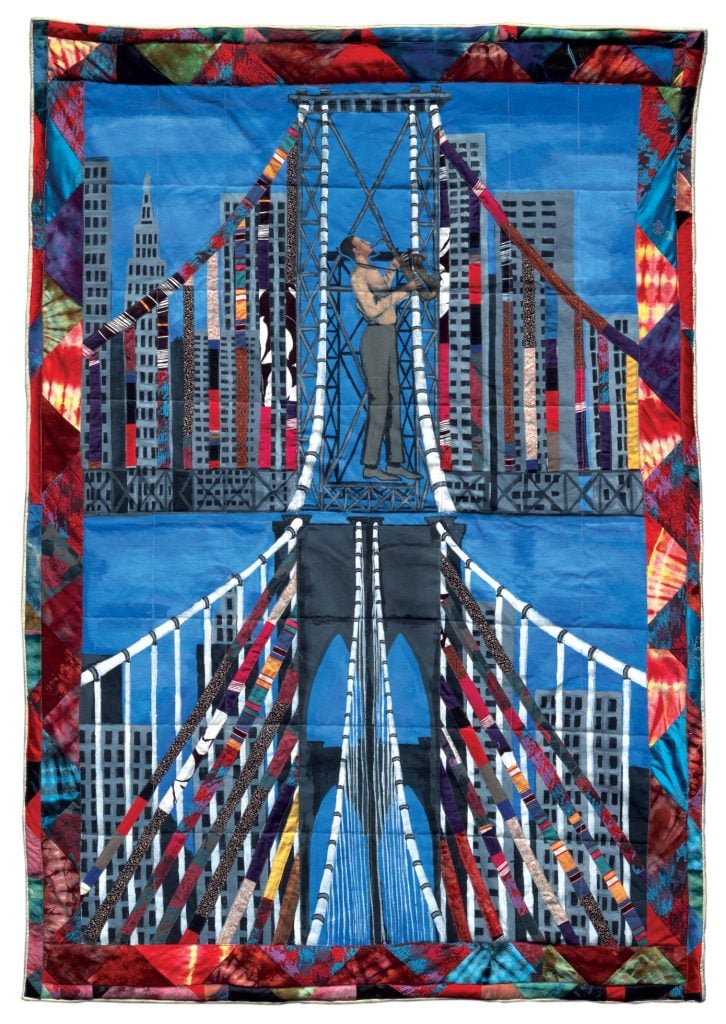
Faith Ringgold, Sonny’s Bridge (1986). © Faith Ringgold / ARS, NY and DACS, London, courtesy ACA Galleries, New York 2022
“If you grew up in Harlem and went to the African American Day Parade every summer,” Self said, “you didn’t realize that, that’s a David Hammons flag, right? You’re just thinking, ‘Oh, that’s a cool Pan-African American flag.’ It’s just an ubiquitous symbol in the neighborhood.”
The storytelling that Ringgold began with Tar Beach continued in her now-famous painted story quilts—which, by and large, depict profound moments of her life.
The quilt version of Tar Beach, dating to 1988, resonates with Self not only because it reminds her of her childhood, but also because of its fantastical sensibility.
“I think that’s so important to talk about, the relationship between the fantastical and Black American identity,” Self said. “There’s so much about Black American life that is surreal, and not necessarily in a positive way or negative way. But it’s important to just bring that fantasy into that work.”
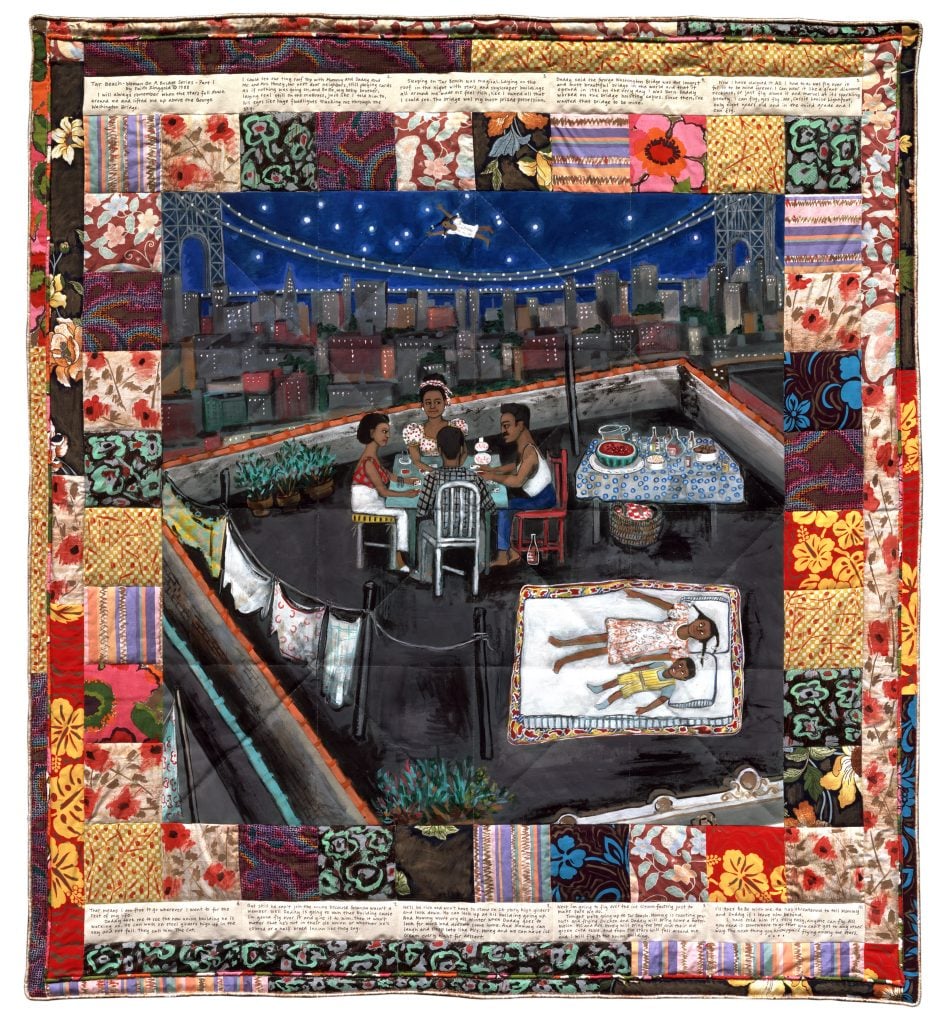
Faith Ringgold, Woman on a Bridge #1 of 5: Tar Beach (1988). © Faith Ringgold / ARS, NY and DACS, London, courtesy ACA Galleries, New York 2022.
Meet Willia Marie Simone. She is a fictional character Ringgold created in the ‘90s for her “French Collection” series. Willia is an expatriate studying art in Paris. Willia is the Black figure who never had a chance to be a central character within Modern art’s depictions of French life.
Extending this fabulation into her next series, Ringgold formulates a story, set stateside, about Willia Marie Simone’s daughter; a narrative that is, according to Gioni, the story of “non-white America and all these counter myths of origin.” One piece features a Black, dreadlocked Statue of Liberty.
In her 20s and 30s, Ringgold assumed the art world would help get her work the audience it deserved. From her “American People” series, to her highly political “Black Light” series, and then through to her performances, sculptures, and story quilts, Ringgold never lost sight of her goal to be honest about the racism and sexism she came up against constantly. And for her efforts, she ended up finding an audience all on her own.
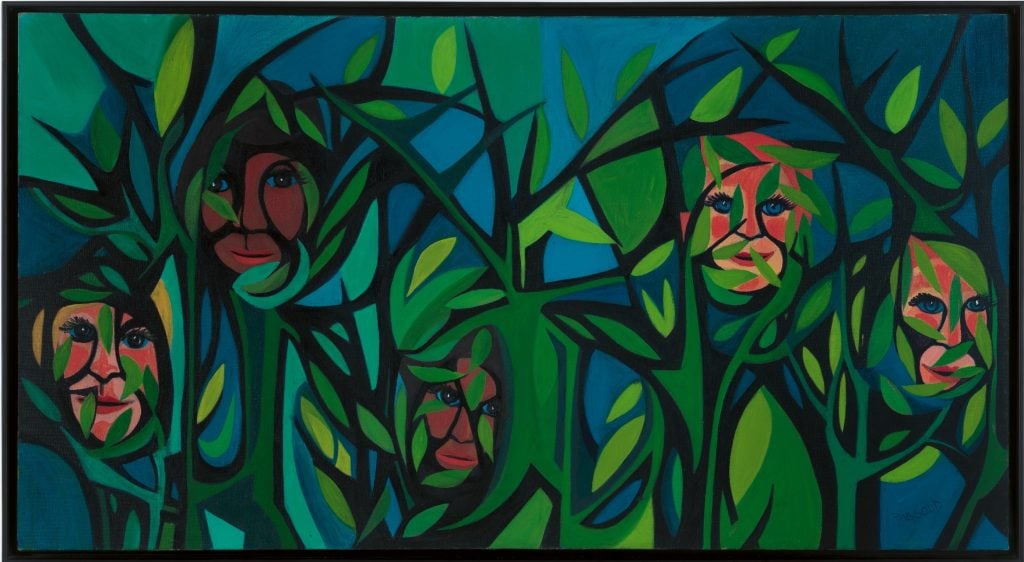
Faith Ringgold, American People Series #15: Hide Little Children (1966). © Faith Ringgold / ARS, NY and DACS, London, courtesy ACA Galleries, New York 2022. Photo: Todd-White Art Photography, London; courtesy Pippy Houldsworth Gallery, London.
In the end, her work reflects that trajectory. It’s easy to see now how Ringgold ultimately helped usher in an environment for contemporary artists such as Self, an environment that never existed for many of Ringgold’s peers.
But Self is also realistic about the impact Ringgold’s work will have today. While we’re in the midst of a cultural shift around gender and race, one that reflects ideals that artist-activists like Ringgold fought long and hard for, there’s still a lot more work to do.
“With any kind of movement, when you’re trying to change the culture, it’s not a matter of completely solving the issue,” Self said. “It is about pushing it one step forward, and then hoping that the next group of people are going to be able to push it again.”